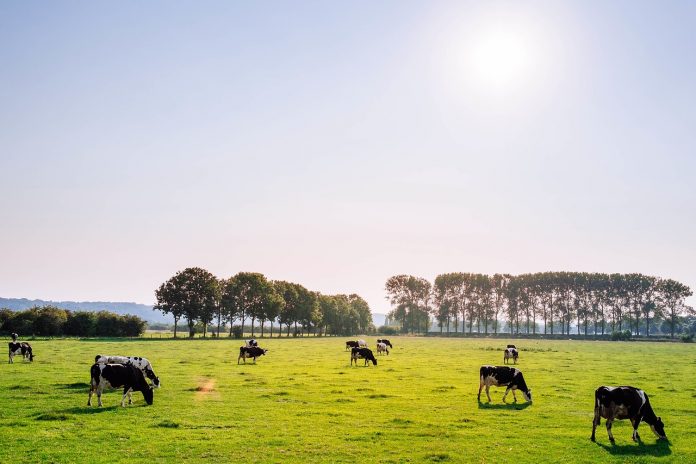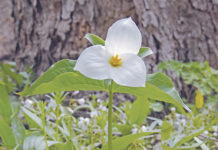Due to this year’s hot, very dry summer and early fall, I wanted to cover a topic that is often noticed in the summer months but can impact livestock in the winter months as well: endophyte toxicity.
Endophytes are microscopic fungi living symbiotically within plants, but their presence is often detrimental to livestock. Endophytes can improve a plant’s tolerance to environmental stresses such as drought, poor quality soil and herbivory, which leads to symptoms in livestock feeding on these plants. This is especially problematic for animals grazing wild type tall fescue, resulting in fescue toxicosis caused by fungal endophytes.
Symptoms
Endophytes produce an alkaloid toxin that is the cause of endophyte toxicity. Horse, sheep and sometimes cattle will experience reduced weight gain and milk production, reproductive issues and elevated body temperatures with periodic exposure. Long-term exposure can lead to fescue foot and fat necrosis. Equine are especially at risk and pregnant mares even more so. Consumption of endophyte-infected hay during late pregnancy can lead to foal mortality, delayed births and reduced milk production. Cattle tend to have a higher tolerance to endophytes, but cattle standing in creeks and streams may warrant further investigation.
There are many diseases that cause symptoms similar to fescue toxicosis, so how do you know if endophytes are the cause? Identification requires working with your veterinarian and submitting tall fescue samples to a lab that offers endophyte testing.
Management
If identified as the cause of symptoms in livestock, you can manage endophytes in the pasture, but it isn’t easy. New cattle brought in from other regions tend to be more susceptible than those born on the farm. Some producers choose to start again and will use a herbicide application to reseed a field.
A barrier to eradication is that fescue is everywhere. The presence of the fungus in a small area, such as a field edge or neighboring property, can re-infect treated fields once cleaned up. So, a complete pasture renovation will likely take several years, a lot of work and patience and funds.
The fungus behind fescue toxicity also is viable for at least a year. If a burndown method, or removal of all plants in a field using an herbicide, is used, seed in summer annuals prior to planting desirable forage species to prevent wild type tall fescue from re-emerging.
Rather than complete eradication of infected tall fescue, many opt to dilute the tall fescue present in the pasture. Interseeding within current forages may help lower fescue concentrations, although it doesn’t completely get rid of the problem.
Whether utilizing burndown or dilution methods, soil test before reseeding. There is probably a good reason why endophyte infected tall fescue is well-established in a field — it tolerates a lot more stress than other forages. Make your desirable forages more competitive so unwanted tall fescue doesn’t reestablish.
In pasture systems, seed heads and overgrazing can lead to increased risk of disease since the highest concentrations of toxins are typically found in the seed head and at the base of the plant. Applications of the herbicide products containing metsulfuran-methyl (Chaparral) can limit the number of seed heads produced, reducing the concentration of alkaloids. However, products like Chaparral may have an 18-month hay sale restriction, so any hay produced following an application would have to wait likely a couple of growing seasons.
This herbicide also impacts growth of other forages, limiting yields or forages available for grazing. Leaving 3-4 inches of forage behind and using rotational grazing helps to minimize the amount of toxin consumed and can be used in conjunction with metsulfuran-methyl or as an alternative.
Other options for management include ammoniation, which breaks down plant cell walls in stems where toxins are highly concentrated, and seeding with novel endophytes that lower risk of endophyte toxicity. In any management plan, use these along with good grazing practices.
Keep in mind infected or contaminated feeds fed to livestock this year will likely have some impacts on animal health and productivity into 2025, including calving, foaling and lambing rates. However, these impacts can be mitigated through use of good pasture management practices and working with a veterinarian.













